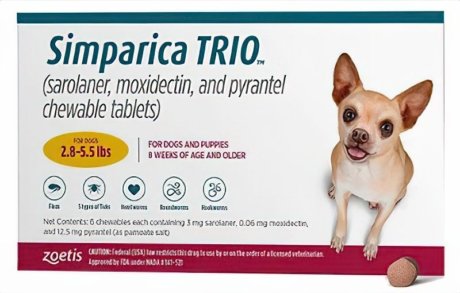How Long Are Dogs Pregnant? A Comprehensive Guide with Care, Food, Signs, Health
Dogs are known for their loyalty, companionship, and endearing nature. If you’re a dog owner or considering bringing a furry friend into your life, understanding the various aspects of dog care is essential. One fundamental aspect that every dog owner should be aware of is the duration of a dog’s pregnancy. Just like humans, dogs go through a pregnancy period, but how long are dogs pregnant? In this comprehensive guide, we will explore the intricacies of canine pregnancy, from conception to birth. Let’s dive into this intriguing journey.
The Canine Reproductive System
Before we delve into the duration of dog pregnancies, it’s crucial to understand the basics of the canine reproductive system. Dogs have a unique reproductive cycle that consists of several stages:
1. Proestrus: The Beginning of the Reproductive Cycle
Proestrus marks the beginning of the reproductive cycle in female dogs. It lasts for about 7 to 10 days, during which time female dogs will experience bleeding and increased urination. However, they are not receptive to mating during this stage.
During Proestrus, female dogs release hormones that signal their readiness to enter the next stage of the reproductive cycle. These hormones can attract male dogs, leading to increased interest from potential mates.
2. Estrus: The Fertile Phase
Estrus is the stage where female dogs become fertile and receptive to mating. This phase typically lasts for 7 to 10 days, and during this time, you might notice behavioral changes, such as increased friendliness and a willingness to mate.
Female dogs release a unique scent during Estrus, known as pheromones, which can attract male dogs from a considerable distance. This scent is one of the ways dogs communicate their reproductive status.
3. Metestrus: The Transition Phase
Metestrus follows estrus and usually lasts for 2 to 3 months. If mating occurs during estrus, this phase might include pregnancy. If not, the female dog will return to a non-receptive state.
During Metestrus, the female’s body undergoes changes as it prepares for potential pregnancy. The uterine lining thickens in anticipation of a fertilized egg.
4. Anestrus: The Resting Period
Anestrus is the resting phase of the reproductive cycle. It is a period of sexual inactivity and can last anywhere from 3 to 5 months.
Anestrus allows the female dog’s body to recover and reset after the previous reproductive stages. During this time, the body returns to a more typical hormonal balance.
How Long Are Dogs Pregnant
Dogs are pregnant, or in veterinary terms, in gestation, for an average of approximately 63 days. However, the duration of pregnancy in dogs can vary depending on factors such as the breed, the size of the dog, and individual variations. The typical range for dog pregnancies is 58 to 68 days.

During this period, it’s important to provide proper care to the pregnant dog, including a balanced and nutritious diet, regular veterinary check-ups, and preparing a comfortable whelping area for the impending birth. Monitoring the dog’s health and well-being is crucial, and if there are any concerns or complications during the pregnancy, it’s best to consult with a veterinarian for guidance and support.
Gestation Period of Dogs Pregnant
A dog’s pregnancy, also known as the gestation period, typically lasts for approximately 63 days. However, this can vary depending on factors such as the dog’s breed and size. Smaller dog breeds tend to have shorter gestation periods, while larger breeds may carry their puppies for a slightly longer duration.
Understanding the gestation period is essential for dog owners and breeders to ensure proper care and prepare for the arrival of puppies. Monitoring the signs of pregnancy and calculating the due date is vital during this period.
How Long Are Dogs Pregnant In Months:
Dogs have a pregnancy, or gestation, that typically lasts around 2 months, equivalent to 9 weeks. The average duration of dog pregnancy is approximately 63 days. However, the precise length of pregnancy can vary based on factors such as the dog’s breed and individual characteristics.
How Long Are Dogs Pregnant For In Weeks:
The typical duration of pregnancy for dogs is approximately 9 weeks, which translates to around 63 days. It’s worth noting that this is an average, and the actual length of pregnancy may vary slightly from one dog to another. It is essential to monitor the pregnancy’s progress with the guidance of a veterinarian.
How Long Are Dogs Pregnant Pitbulls:
Pitbulls, like all dog breeds, have a standard pregnancy duration of approximately 63 days or 9 weeks. The length of pregnancy for Pitbulls aligns with the general timeline for dog pregnancies. However, variations can occur, so it’s important to track the pregnancy and consult a veterinarian for proper care and monitoring.
How Long Are Small Dogs Pregnant:
Small dog breeds, such as Chihuahuas or Yorkshire Terriers, typically have pregnancies that last about 63 days or 9 weeks, similar to the average for all dog breeds. The size of the dog does not significantly affect the duration of pregnancy. Nevertheless, it’s important to remember that small dogs may have smaller litters compared to larger breeds. Consult with a veterinarian for appropriate prenatal care and to monitor the pregnancy’s progression for your specific dog, regardless of its size or breed.
Factors Affecting Pregnancy Duration
Several factors can influence the duration of a dog’s pregnancy. These include:

1. Breed Size
Smaller dog breeds tend to have shorter gestation periods, often around 58 to 63 days, while larger breeds may carry their puppies for up to 68 days.
This size-related variation is partly due to differences in metabolism and growth rates between small and large breeds. Smaller dogs mature and develop more quickly, which affects their pregnancy duration.
2. Age of the Dog
The age of the dog can also play a role in the length of pregnancy. Younger dogs may have slightly shorter pregnancies than older dogs.
Younger dogs often have more efficient reproductive systems, leading to shorter pregnan-cy durations. However, it’s essential to consider the overall health of the dog when discussing age-related factors.
3. Litter Size
Interestingly, the size of the litter can affect pregnancy duration. Dogs carrying a larger number of puppies may have slightly shorter pregnancies.
This phenomenon is linked to the increased demand on the mother’s body when she is carrying more puppies. As a result, her body may complete the pregnancy slightly sooner to accommodate the growing litter.
4. Health of the Mother
The overall health of the pregnant dog can impact the length of her pregnancy. Dogs with underlying health issues may experience variations in their gestation period.
Healthy dogs are more likely to have pregnancies that follow the average duration. It’s crucial to maintain regular veterinary check-ups and address any health concerns promptly.
5. Genetic Factors
Some dog breeds have genetic factors that can influence the length of pregna-ncy. For example, Bulldogs often have shorter pregnancies compared to other breeds.
Genetics play a role in various aspects of canine reproduction, including pregnancy duration. Breed-specific factors can affect hormone levels and the efficiency of the reproductive system.
Signs of Pregnancy
Recognizing the signs of pregnancy in your dog is essential for providing proper care and preparation. Some common signs include:
- Changes in Appetite: Pregnant dogs may experience changes in their eating habits. Some may have an increased appetite, while others may become pickier about their food.
- Weight Gain: As pregnancy progresses, you’ll notice your dog’s abdomen expanding, resulting in weight gain.
- Nesting Behavior: Many pregnant dogs exhibit nesting behavior, such as seeking out a quiet, secluded spot to prepare for birth.
- Enlarged Nipples: The nipples of a pregnant dog may become larger and more prominent.
Paying attention to these signs can help you confirm your dog’s pregnancy early on and provide the necessary care.
Preparing for the Arrival
As your dog’s due date approaches, it’s crucial to prepare for the upcoming litter. Here are some essential steps to consider:
1. Create a Whelping Box
A whelping box provides a safe and comfortable space for your dog to give birth and care for her puppies.
When designing a whelping box, consider the size and comfort of both the mother and the puppies. It should be spacious enough for the mother to move around comfortably but cozy enough to keep the puppies warm.
2. Consult with a Veterinarian
Regular check-ups with your veterinarian are essential to ensure the health and well-being of your pregnant dog.
Your vet can monitor the progress of the pregnancy, provide guidance on nutrition and care, and address any concerns that may arise during this critical time. Open communication with your veterinarian is key to a successful pregnancy.
3. Proper Nutrition
Ensure your dog receives a balanced and nutritious diet tailored to her pregnancy needs.
During pregnancy, your dog’s nutritional requirements change. She needs additional calories and nutrients to support both her own health and the growth of her puppies. High-quality dog food formulated for pregnancy and lactation is essential.
4. Monitor Temperature
A drop in your dog’s body temperature can be an early indicator that labor is imminent.
This drop in temperature, usually below 100°F (37.8°C), can occur within 24 hours of labor. Monitoring your dog’s temperature daily during the final days of pregnancy can help you predict when labor will start.
Pregnancy Complications
While most dog pregnancies proceed without major issues, it’s essential to be aware of potential complications, including:
1. Eclampsia

Eclampsia, also known as milk fever, can occur during or after pregnancy, leading to muscle tremors, seizures, and other serious health problems. Immediate veterinary attention is crucial if you suspect eclampsia.
Eclampsia typically arises due to a sudden demand for calcium during lactation. It’s more common in small breeds and dogs with large litters.
2. Dystocia
Dystocia refers to difficulty during labor and delivery. It can result from various factors, including the size of the puppies or abnormalities in the birth canal. Dystocia requires prompt veterinary intervention.
Dystocia can be a challenging situation for both the mother and her puppies. Common causes include oversized puppies, a narrow birth canal, or poor positioning of the puppies during birth.
3. Infections
Pregnant dogs are more susceptible to infections. Ensure your dog receives all necessary vaccinations and consult your vet if you notice any signs of illness.
Maintaining a strong immune system is crucial during pregnancy. Routine vaccinations, parasite control, and a clean, sanitary environment can help prevent infections that could harm the mother and her puppies.
The Birthing Process
Understanding the stages of labor in dogs is vital for a smooth delivery. The birthing process typically consists of three stages:
1. Stage One
During the first stage of labor, your dog may become restless, pant heavily, and exhibit nesting behavior. Contractions begin, and the cervix dilates.
This stage can last anywhere from 6 to 12 hours or longer, depending on the dog’s breed and individual factors. It’s essential to monitor your dog closely during this time and provide her with a quiet, stress-free environment.
2. Stage Two
Stage two is the active stage of labor. Your dog will deliver puppies during this phase. Each puppy is usually born within 30 to 60 minutes of active straining.
The mother dog plays an active role in the birth process, using her abdominal muscles to push the puppies out. It’s essential to be present to assist if needed but also to allow the mother to bond with her puppies.
3. Stage Three
The third stage involves the expulsion of the placenta or afterbirth. This occurs after each puppy’s birth.
The mother will usually eat the placenta, a natural behavior that provides essential nutrients and helps clean up after the birth. It’s normal for the mother to eat the placenta, but if she doesn’t, you should remove it to prevent potential complications.
Caring for Newborn Puppies
Once the puppies are born, it’s crucial to provide them with proper care:
1. Ensure Proper Nursing
Allow the puppies to nurse as soon as possible. The mother’s milk provides essential nutrients and antibodies.
The first milk, known as colostrum, is rich in antibodies that help protect the puppies from infections. Ensuring they receive this vital nutrition is crucial for their health.
2. Keep Them Warm
Newborn puppies cannot regulate their body temperature, so ensure they stay warm. Use a heat lamp or heating pad if necessary.
Maintaining a warm environment is vital for the puppies’ survival, especially during their first few weeks of life. Make sure the whelping box remains at a comfortable temperature, around 85°F (29.4°C) during the first week, and then gradually decreasing.
3. Monitor Their Health
Regularly check the puppies for any signs of illness or distress. Contact your veterinarian if you have concerns.
Puppies are vulnerable during their early weeks, and prompt attention to any health issues is critical. Keep an eye on their weight gain, hydration, and overall well-being.
Understanding Canine Pregnancy in Depth
Understanding canine pregnancy involves recognizing the physiological and behavioral changes that occur in pregnant dogs. These changes include increased appetite, weight gain, changes in nipple size and color, and behavioral shifts like nesting and increased affection towards the owner. In-depth knowledge of these signs helps dog owners provide appropriate care during pregnancy.

Breeding and Reproduction
Breeding and reproduction in dogs should be approached with careful planning and consideration. Responsible breeding involves selecting suitable mates, ensuring the health of both the male and female, and adhering to ethical breeding practices. Seek guidance from a veterinarian or experienced breeder to navigate this complex process successfully.
When Is the Best Time to Breed Your Dog?
Determining the best time to breed your dog is crucial for a successful mating. This optimal timing is associated with the estrus or heat cycle, which occurs approximately every six months. Recognizing the signs of estrus, including behavioral changes and physical indicators, can help you plan the breeding process effectively.
The Art of Dog Breeding
The art of dog breeding goes beyond the basics of reproduction. It involves a deep understanding of genetics, maintaining breed standards, and ethical considerations. Responsible breeders strive to preserve the integrity of breeds while ensuring the health and well-being of the puppies they produce.
Pregnancy Care and Health
Diet and Nutrition During Pregnancy
Diet and nutrition play a pivotal role in ensuring the health of both the pregnant dog and her developing puppies. Pregnant dogs require a balanced diet that includes higher protein and calorie intake to support the growing fetuses. Consult with a veterinarian to determine the most suitable diet for your pregnant dog.
Exercise During Pregnancy
Maintaining an appropriate exercise regimen during pregnancy is essential to keep the mother in good physical condition and reduce the risk of complications. Moderate, low-impact exercises are recommended, but it’s crucial to consult with a veterinarian for guidance on the right exercise plan during pregnancy.
Stages of Canine Pregnancy
The Early Stages of Pregnancy
The early stages of canine pregnancy are marked by the implantation of embryos in the uterine lining. While there may not be visible physical changes, behavioral signs, such as increased affection and nesting behavior, can provide clues. Confirming pregnancy at this stage often requires a veterinary examination.
The Mid-Stages of Pregnancy
As pregnancy progresses, physical changes become more apparent. The mother’s abdomen enlarges as the puppies grow, and it’s possible to feel the puppies’ movements through gentle palpation. Veterinary ultrasounds or X-rays can provide a more accurate assessment of the developing puppies.
Preparing for Labor and Delivery
Preparing for labor and delivery involves creating a comfortable and secure environment for the mother to give birth. Recognizing the signs of labor, such as restlessness, panting, and nesting behavior, is essential. Being prepared for potential complications and knowing when to seek immediate veterinary assistance is crucial for a successful delivery.
Postpartum Care
Caring for the Mother
Postpartum care focuses on the well-being of the mother after giving birth. Providing a quiet and clean space for bonding with her puppies is vital. Ensuring that she receives proper nutrition and monitoring her for any signs of postpartum complications, such as mastitis or uterine infections, is essential for her recovery.
Raising Healthy Puppies
Raising healthy puppies from birth requires meticulous care. This includes proper feeding, socialization, and healthcare. Maintaining a warm and safe environment during the first few weeks of life is critical for their growth and development.
Common Dog Breeds and Pregnancy

Small Dog Breeds
Small dog breeds, like Chihuahuas, have unique considerations during pregnancy due to their size. Monitoring their weight, providing a comfortable whelping space, and ensuring extra warmth for the puppies are important aspects of caring for pregnant small breeds.
Pregnancy in Chihuahuas
Pregnancy in Chihuahuas requires careful attention because of their diminutive stature. These tiny dogs may need assistance during labor, and special care should be taken to keep both the mother and puppies warm and safe.
Pregnancy in Dachshunds
Dachshunds, with their distinctive elongated bodies, can experience specific complications during pregnancy and labor. Providing extra care and monitoring is necessary to ensure a healthy outcome for pregnant Dachshunds.
Medium Dog Breeds
Medium-sized dog breeds, including Golden Retrievers and Labradors, have their own unique considerations during pregnancy. Adequate nutrition, space, and exercise tailored to their needs are essential for their well-being.
Pregnancy in Golden Retrievers
Pregnancy in Golden Retrievers involves monitoring their increasing appetite and weight gain. Ensuring proper prenatal care is crucial for the health and well-being of both the mother and her puppies.
Pregnancy in Labradors
Labradors are known for their energy and intelligence. Pregnancy in Labradors may require additional attention to their exercise requirements and specific nutritional needs to support a healthy pregnancy.
Large Dog Breeds
Large dog breeds, such as Great Danes and German Shepherds, present their own set of challenges during pregnancy. Proper care, including orthopedic support and careful monitoring, is essential for their successful pregnancy and delivery.
Pregnancy in Great Danes
Pregnancy in Great Danes, known for their massive size, requires vigilant care. Monitoring their diet, providing ample space for the mother and puppies, and being prepared for potential complications are key aspects of caring for pregnant Great Danes.
Pregnancy in German Shepherds
German Shepherds, with their loyalty and intelligence, require special care during pregnancy. Tailoring their nutrition, exercise, and overall care to their specific needs is essential for a healthy pregnancy and the well-being of the mother and her puppies.
Conclusion:
In conclusion, the duration of a dog’s pregnancy, known as the gestation period, typically lasts for around 63 days. However, it’s important to remember that individual factors, such as breed and size, can influence this timeline. Understanding the stages of the canine reproductive cycle and recognizing the signs of pregnancy are vital for responsible dog ownership. By providing proper care and preparation, you can ensure a safe and healthy pregnancy for your furry friend.
Frequently Asked Questions:
-
Can a dog get pregnant during her first heat cycle?
Yes, it is possible for a dog to become pregnant during her first heat cycle. It’s crucial to be vigilant and take appropriate precautions if you don’t intend to breed your dog.
-
Are there any complications that can arise during dog pregnancy?
Yes, just like in human pregnancies, complications can occur in dog pregnancies. These may include difficulties during labor, infections, or issues with the puppies’ health. Regular veterinary check-ups are essential to monitor your dog’s pregnancy.
-
How many puppies can a dog have in one litter?
The number of puppies in a dog’s litter can vary widely depending on the breed. Smaller breeds tend to have fewer puppies, while larger breeds can have larger litters, sometimes numbering eight or more.
-
When should I start providing extra nutrition for my pregnant dog?
You should start providing extra nutrition for your pregnant dog during the second half of her pregnancy. Consult with your veterinarian to determine the right diet and feeding plan.
-
How can I tell if my dog is going into labor?
One of the early signs of labor in dogs is a drop in body temperature. Additionally, your dog may become restless, exhibit nesting behavior, and experience contractions. If you suspect your dog is in labor, consult with your veterinarian for guidance.
-
What are some common dog breeds with shorter or longer gestation periods?
Certain breeds are known for shorter or longer gestation periods. For example, Chihuahuas typically have shorter pregnancies, while Great Danes may have longer ones. Understanding your dog’s breed can help you anticipate the length of her pregnancy more accurately.
-
Is it possible to determine the exact number of puppies a dog will have before birth?
While it’s challenging to determine the precise number of puppies before birth, veterinary ultrasound scans can provide an estimate. However, the final number may vary slightly.
Recommended:
Pancreatitis in Dogs | Causes, 6 Symptoms, Diagnosis, Treatment, Prevention, and FAQs





























